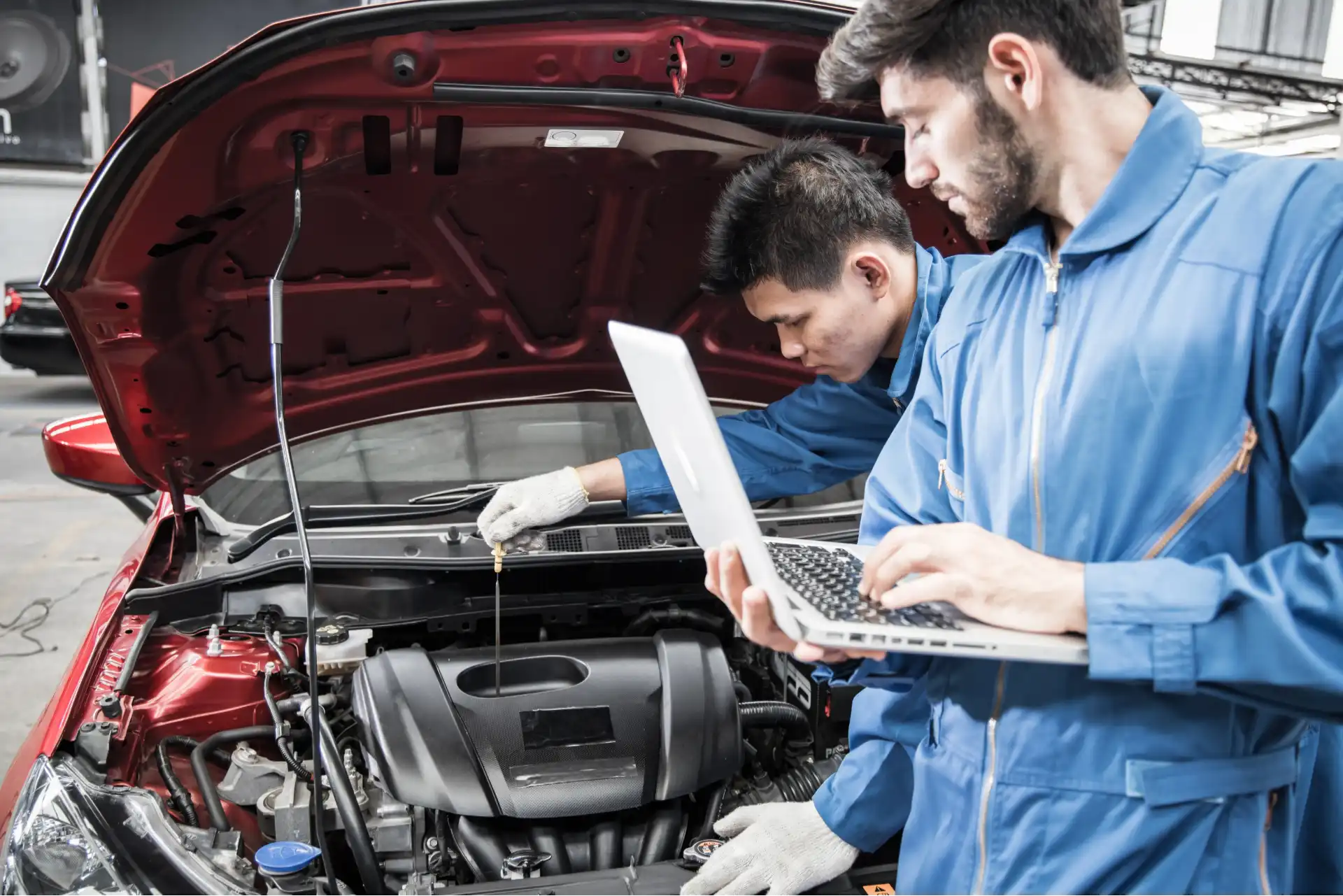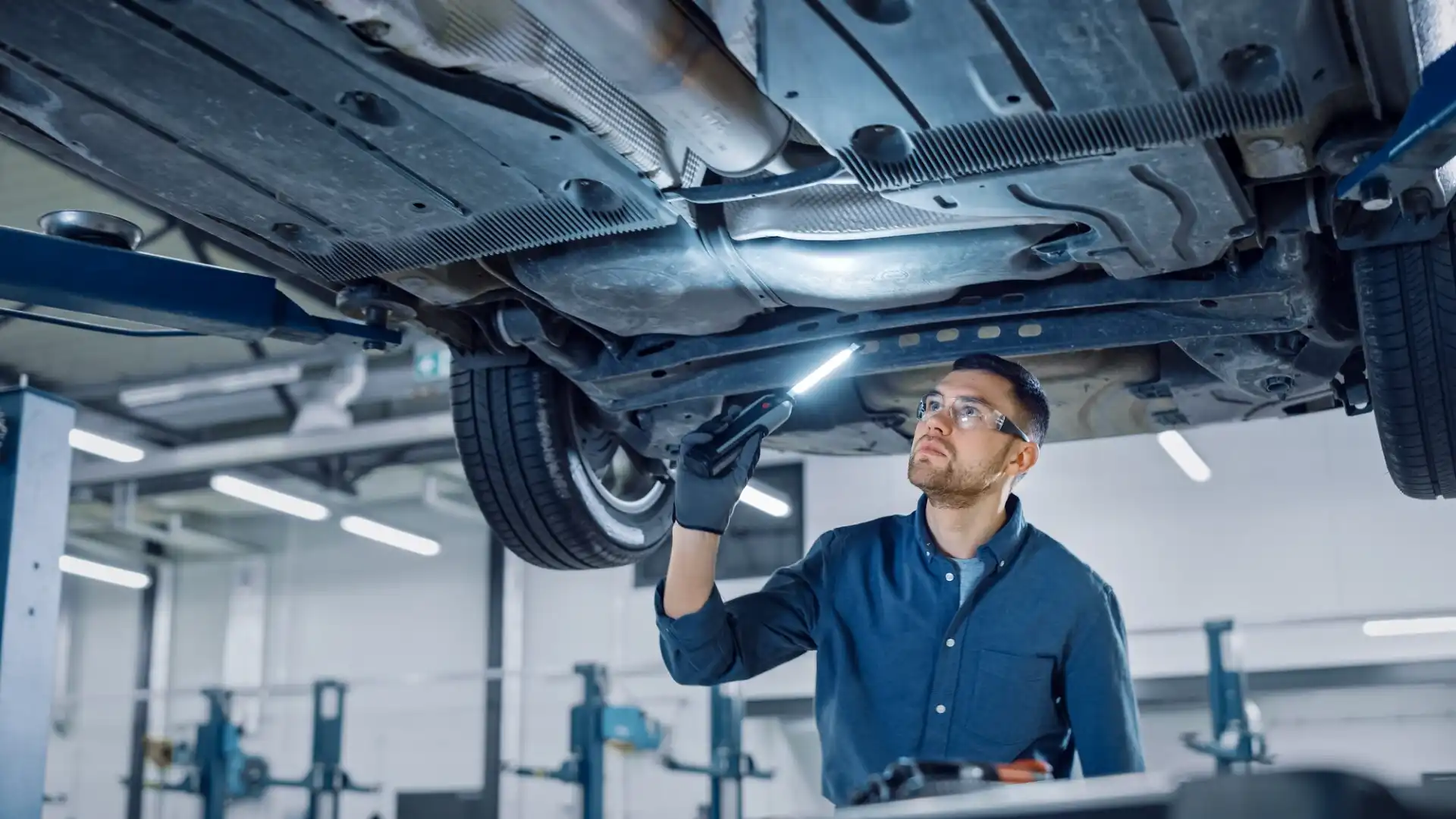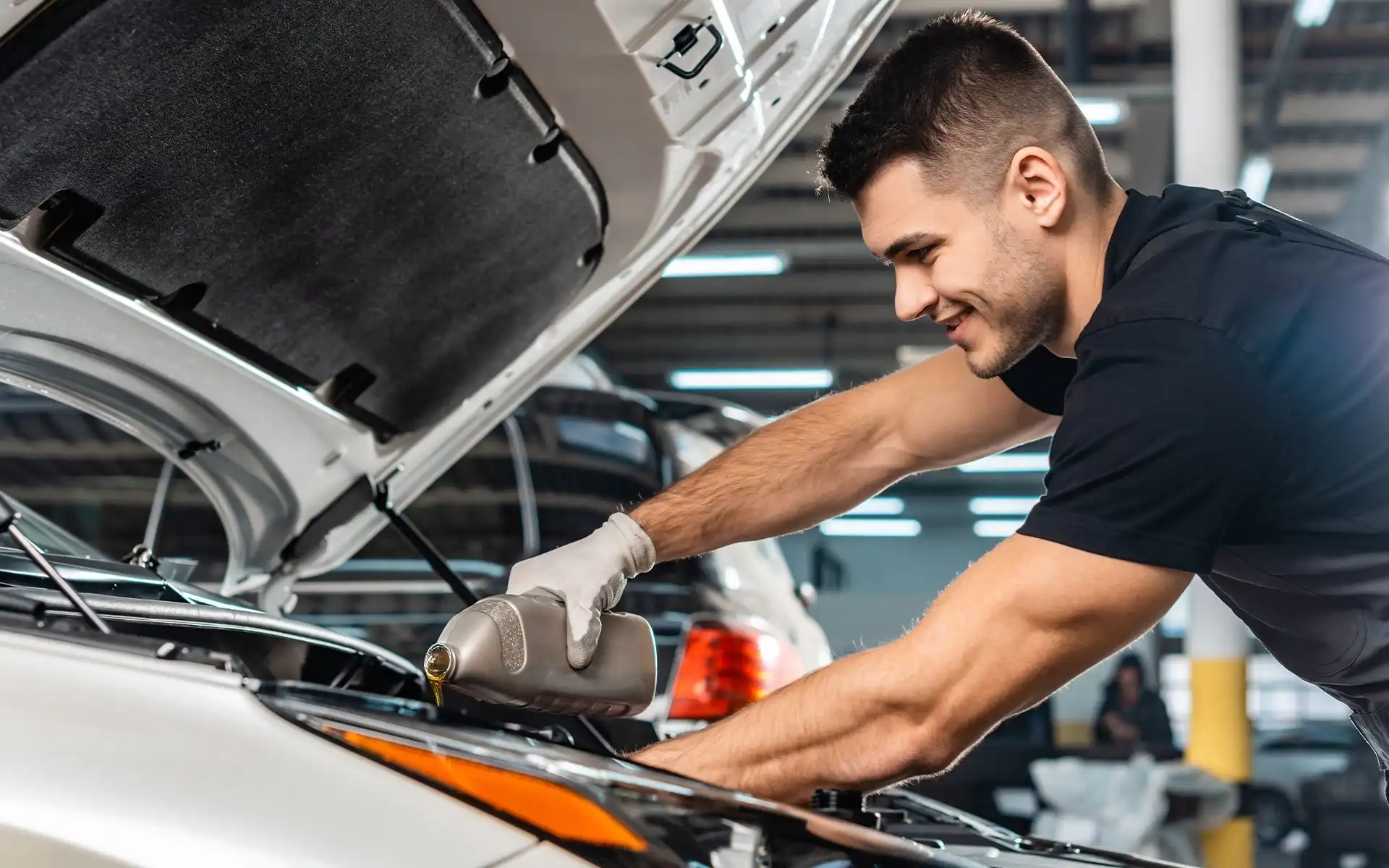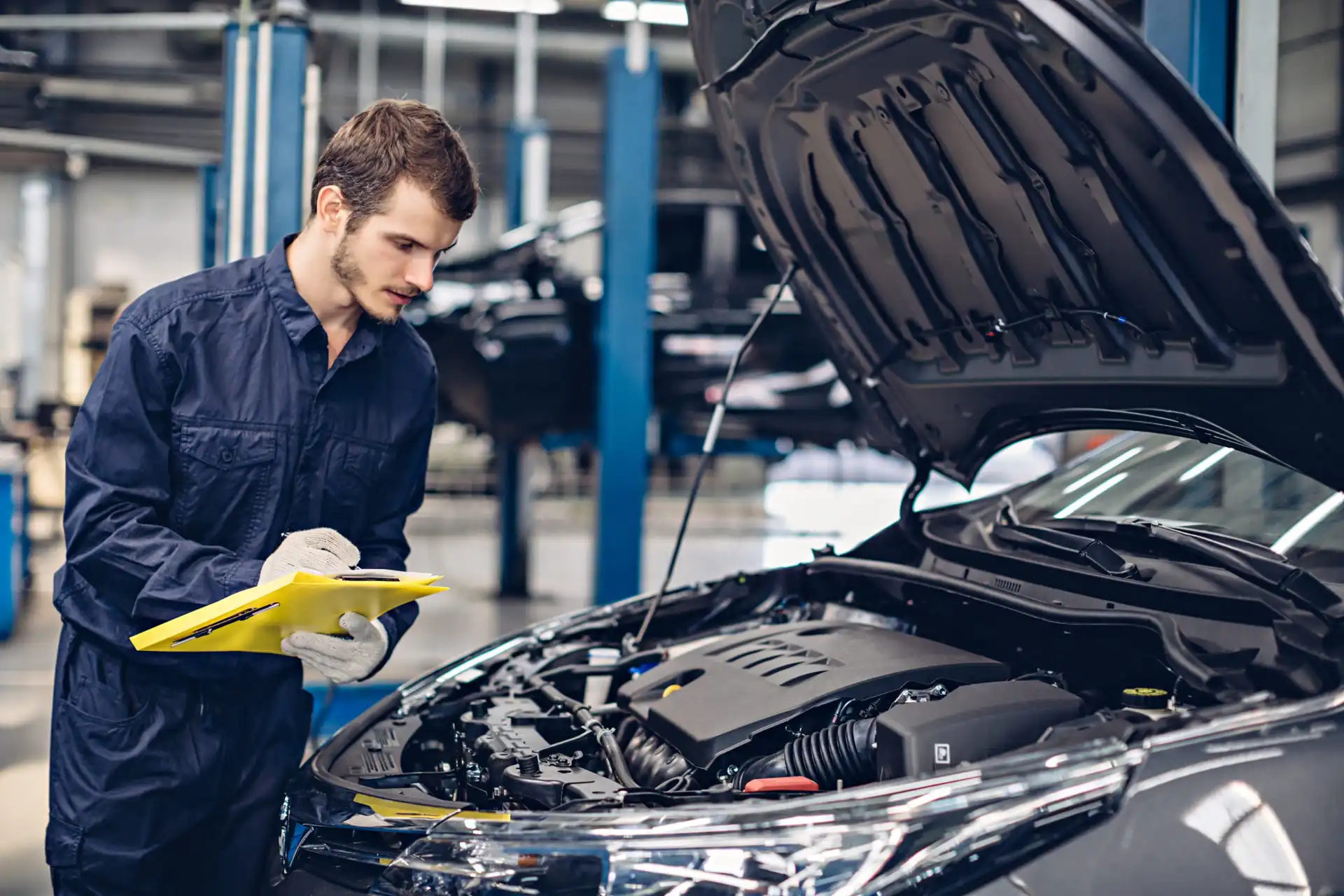Every car owner has faced that moment of uncertainty: Is it time for an auto repair, or is the issue just a minor inconvenience? Waiting too long to address car problems can lead to costly repairs or even more serious issues down the road. Fortunately, there are several key warning signs that can help you determine when it’s time to take your car in for a repair.
In this blog, we’ll discuss the top warning signs that your vehicle may need attention, helping you avoid major breakdowns and keep your car running smoothly.
1. Strange Noises
The Warning: Your car starts making unusual sounds that weren’t there before. This could include squeaking, grinding, rattling, or whining noises when you’re driving.
What It Could Mean:
-
Squealing or screeching: If you hear a high-pitched squeal when you press the brakes, it might be time for new brake pads.
-
Grinding noises: Grinding noises while driving may indicate an issue with the brake system or the transmission.
-
Rattling sounds: A rattling noise could point to loose parts under the car or issues with the exhaust system.
Why It’s Important: Ignoring these sounds could lead to damage to important car components, increasing repair costs.
What You Should Do: Pay attention to when and where the noise occurs and take your car to a trusted repair shop for an inspection.
2. Warning Lights on the Dashboard
The Warning: You notice that one or more of the warning lights on your dashboard are illuminated, such as the check engine light, oil pressure light, or tire pressure warning light.
What It Could Mean:
-
Check engine light: This could signal a range of problems, from a loose gas cap to a more serious issue with the engine.
-
Oil pressure light: Low oil levels or a problem with the oil pump could trigger this warning light.
-
Tire pressure warning light: Your tire pressure may be low, which could result in poor handling and increased tire wear.
Why It’s Important: Dashboard lights often indicate issues that could affect the overall performance and safety of your vehicle. Ignoring them can lead to bigger, more expensive problems.
What You Should Do: Refer to your car’s manual for guidance on the specific warning light. If you’re unsure, have your vehicle checked by a professional as soon as possible.
3. Unusual Vibrations or Shaking
The Warning: Your car starts to shake or vibrate while driving, especially at higher speeds or when braking.
What It Could Mean:
-
Shaking while braking: This could indicate worn-out brake pads or a warped brake rotor.
-
Vibrations at high speeds: These may be caused by misaligned wheels, an unbalanced tire, or suspension issues.
Why It’s Important: Vibration problems can significantly affect your control over the car, leading to unsafe driving conditions if left unchecked.
What You Should Do: If you experience any vibrations, especially when braking, get your vehicle to a repair shop immediately for a wheel alignment or brake inspection.
4. Poor Acceleration or Sluggish Performance
The Warning: You notice that your car isn’t accelerating as quickly as it used to, or it feels sluggish when you press the gas pedal.
What It Could Mean:
-
Fuel system issues: Clogged fuel injectors, a dirty air filter, or problems with the fuel pump could be slowing down acceleration.
-
Transmission problems: Sluggish shifting or hesitation when accelerating could indicate transmission issues.
Why It’s Important: A decline in acceleration or performance can be a sign of serious engine or transmission problems that could leave you stranded.
What You Should Do: Take your car to a mechanic to check the fuel system, air filter, and transmission. Regular maintenance can help prevent these issues from worsening.
5. Leaking Fluids
The Warning: You notice puddles of fluid under your car after it’s been parked for a while. This could be clear, reddish, or greenish fluid.
What It Could Mean:
-
Clear fluid (water): This is typically just condensation from your air conditioning system and isn’t usually a cause for concern.
-
Red or brown fluid (transmission fluid): This could indicate a transmission leak.
-
Green or orange fluid (coolant): A coolant leak could signal a problem with the radiator or hoses.
-
Black or brown fluid (engine oil): This could be a sign of a leaky oil filter or oil pan.
Why It’s Important: Leaking fluids can cause serious damage to your vehicle, especially if they affect essential components like the transmission or engine.
What You Should Do: If you notice any leaks, take your car to a mechanic immediately to identify the source and prevent further damage.
6. Difficulty Steering or Steering Wheel Pulling
The Warning: Your steering feels stiff, or you notice that your car pulls to one side while driving.
What It Could Mean:
-
Stiff steering wheel: Low power steering fluid or a malfunctioning power steering pump could be the culprit.
-
Pulling to one side: This could indicate uneven tire pressure, an alignment issue, or a problem with the steering or suspension system.
Why It’s Important: If your steering is not functioning properly, it can make driving difficult and dangerous, particularly at high speeds or on busy roads.
What You Should Do: Have your vehicle inspected to check for alignment, power steering fluid levels, or suspension issues.
7. Overheating Engine
The Warning: You notice that the temperature gauge is rising or the engine is emitting steam from under the hood.
What It Could Mean:
-
Coolant leak: A leak in the radiator or cooling system can lead to engine overheating.
-
Broken thermostat: If the thermostat fails, it can prevent the engine from cooling down properly.
-
Water pump issues: A malfunctioning water pump can also cause your engine to overheat.
Why It’s Important: An overheating engine can cause serious damage to your car’s engine, potentially leading to a costly repair or engine replacement.
What You Should Do: If your engine is overheating, pull over immediately and turn off the engine. Have your cooling system checked by a mechanic to prevent further damage.
Conclusion
Being proactive about your car’s maintenance can save you from costly repairs and unexpected breakdowns. If you notice any of the warning signs mentioned in this blog, don’t wait to get your vehicle checked. Early detection and repair can not only keep your car running smoothly but also ensure your safety on the road.
If you’re unsure about the condition of your vehicle or need professional assistance, don’t hesitate to visit a trusted auto repair shop. An experienced mechanic can diagnose the issue and help you get back on the road with peace of mind.





